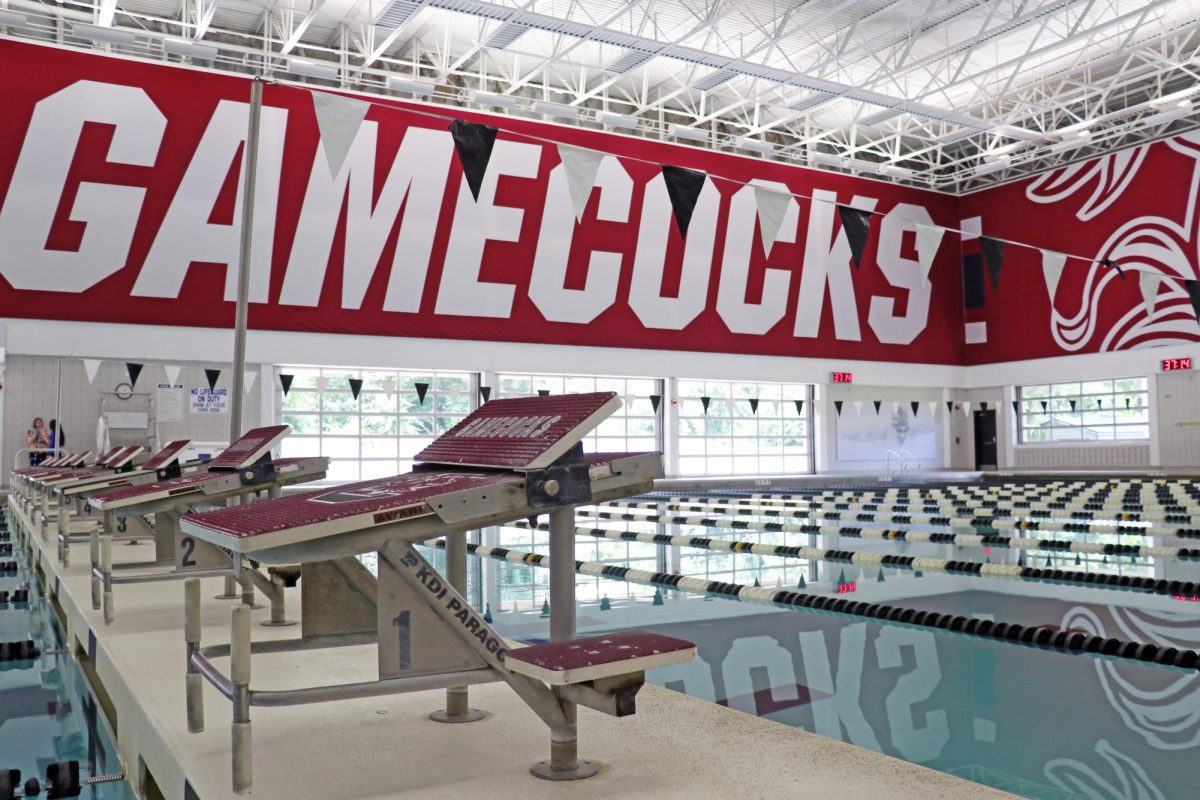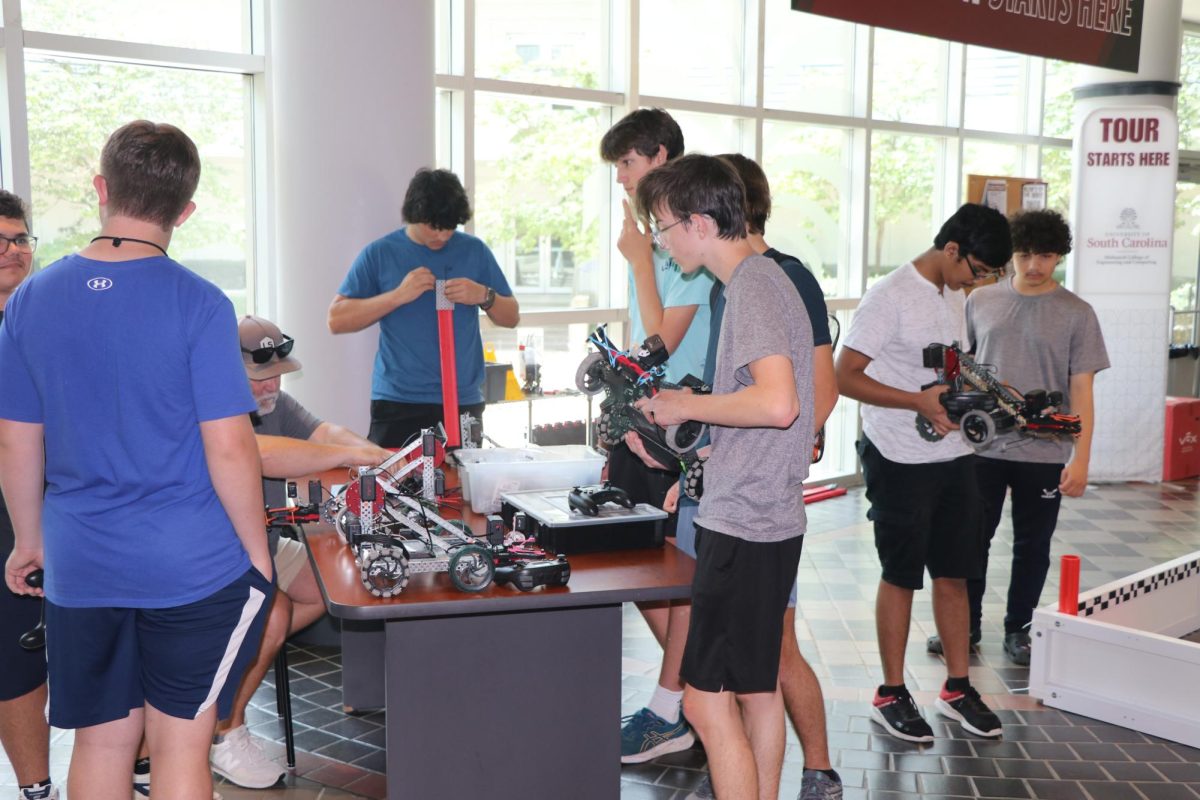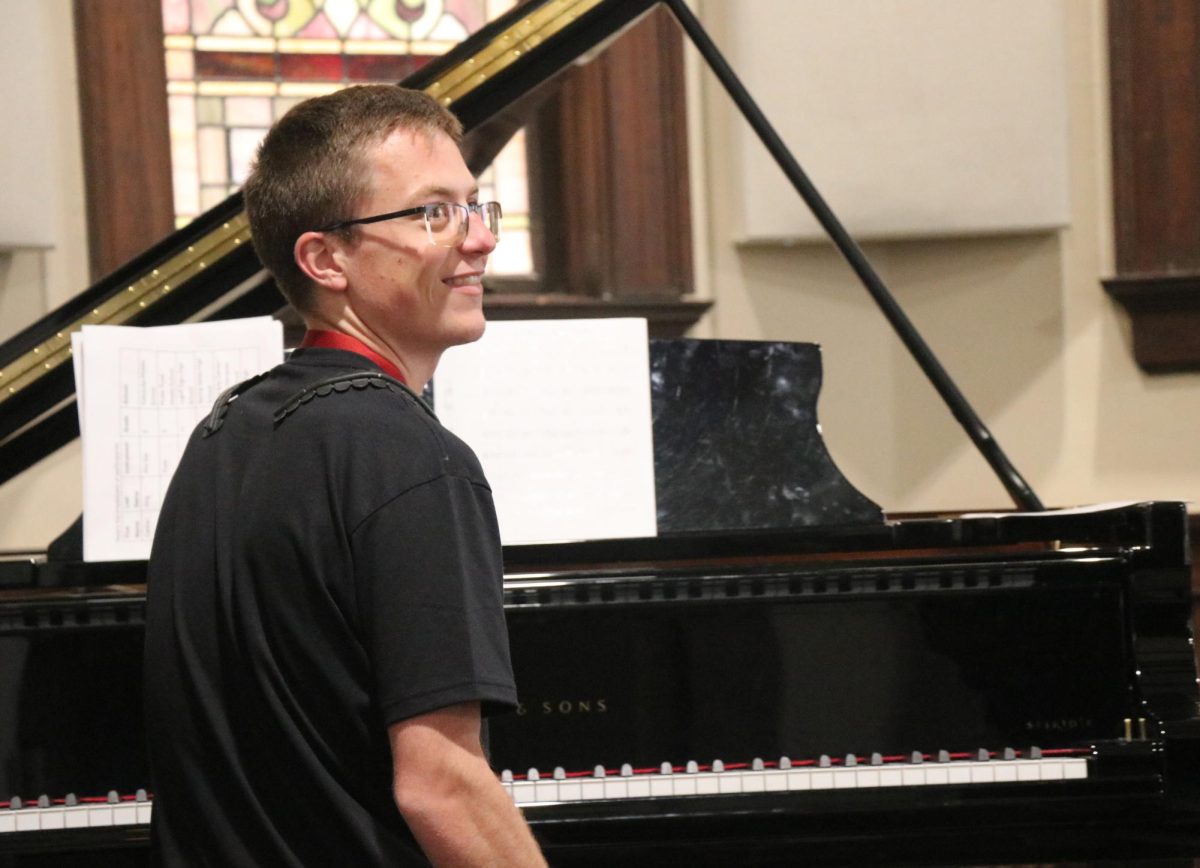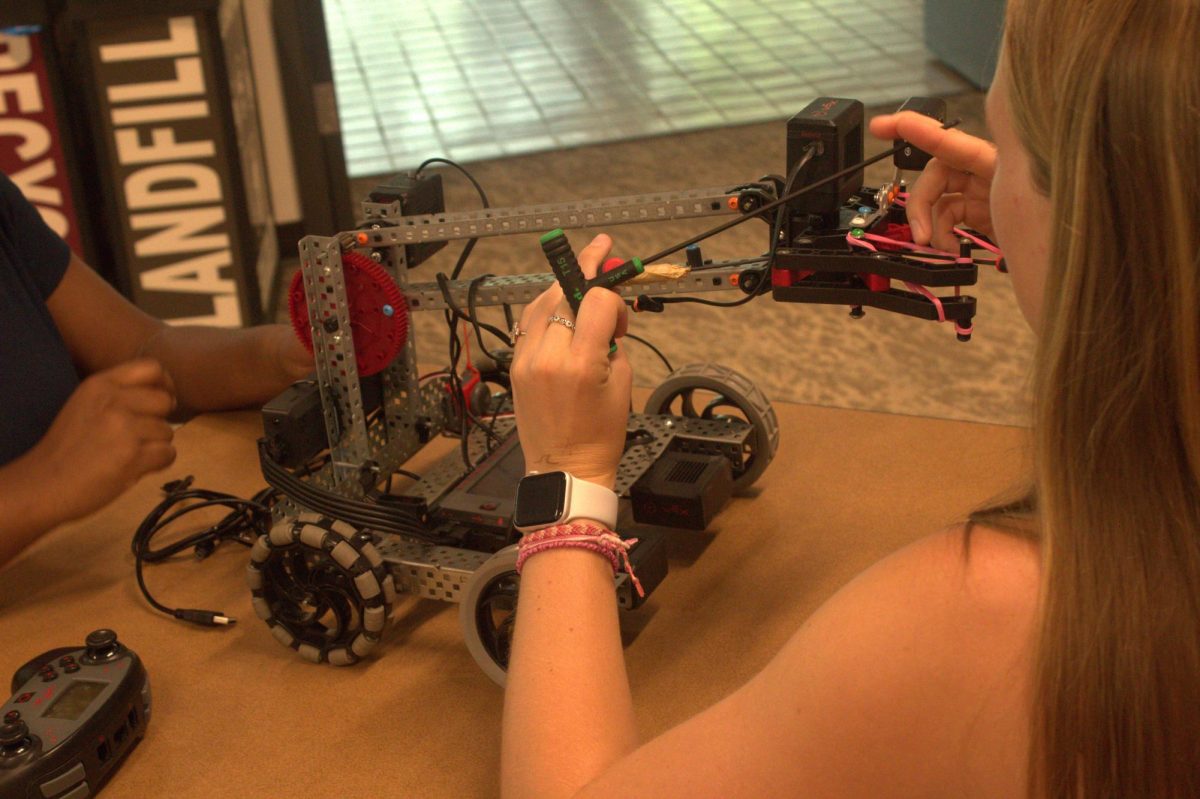The question is how the technique is seen and worked on below water; the answer is underwater filming. Cameras underwater at the Carolina Natatorium help the students see how their technique looks below the surface and allows the coaches, like Nils Wich-Glasen and Jason Calanog, to help coach the swimmers better. Twenty-one swimmers came to the University of South Carolina, some from across the world, to take advantage of the camp and its offers.
The Technique
With four different strokes, technique can be easily confused. The job at this camp was to better the swimmers’ techniques to improve speed while swimming in each of the strokes. A different stroke was focused on from day-to-day, with coaching from the men’s assistant coach & men’s recruiting coordinator Nils Wich-Glasen, who was a swimmer at the university himself from 2015 to 2018 and holds the 200-yard record for the program to this day.
“I was a professional swimmer, and obviously you work on a lot of details, and through that I did a lot of clinics as well,” said Wich-Glasen, “and I think I’m just kind of trying to share some of my knowledge that I accumulated over the years from very good swimmers myself.”
The swimmers performed two different dives – freestyle and backstroke – while being filmed using underwater technology. This allowed both the coaches and the swimmers to see their dives while they were immersed in the water. The swimmers received personalized feedback and comments on their dives from Jason Calanog, the men’s associate head coach. The comments would allow them to adjust their technique while diving and progress in their swimming.
The Purpose
The camp was geared towards more competitive swimmers, though swimmers of all levels and abilities were welcomed. Calanog, the camp director, spoke of the significance of swimming as both a skill and a sport. “Swimming is a skill that you need to learn because there’s so much water around us.” While the camp was focused on the competitive and technique-based swimming, the skill is essential and one that must be learned.
Calanog assisted the Aggies’ advance in the SEC and NCAA during his nine-year period at Texas A&M. He joined USC’s swim program in June of 2024. When asked what drew him to USC after such a long time at Texas A&M, he discussed the opportunity for a new school and environment, and the “great traditions in the past.”
While the camp is relatively small now, Calanog hopes for it to grow and flourish in the future. “For me, the importance of this camp is to build it so that we can give back to Columbia, South Carolina, to USC, and just give to the kids.”






